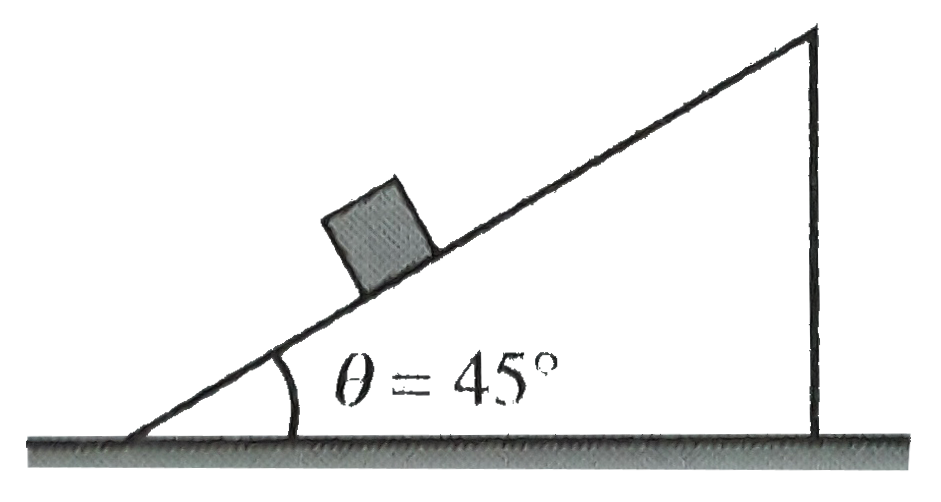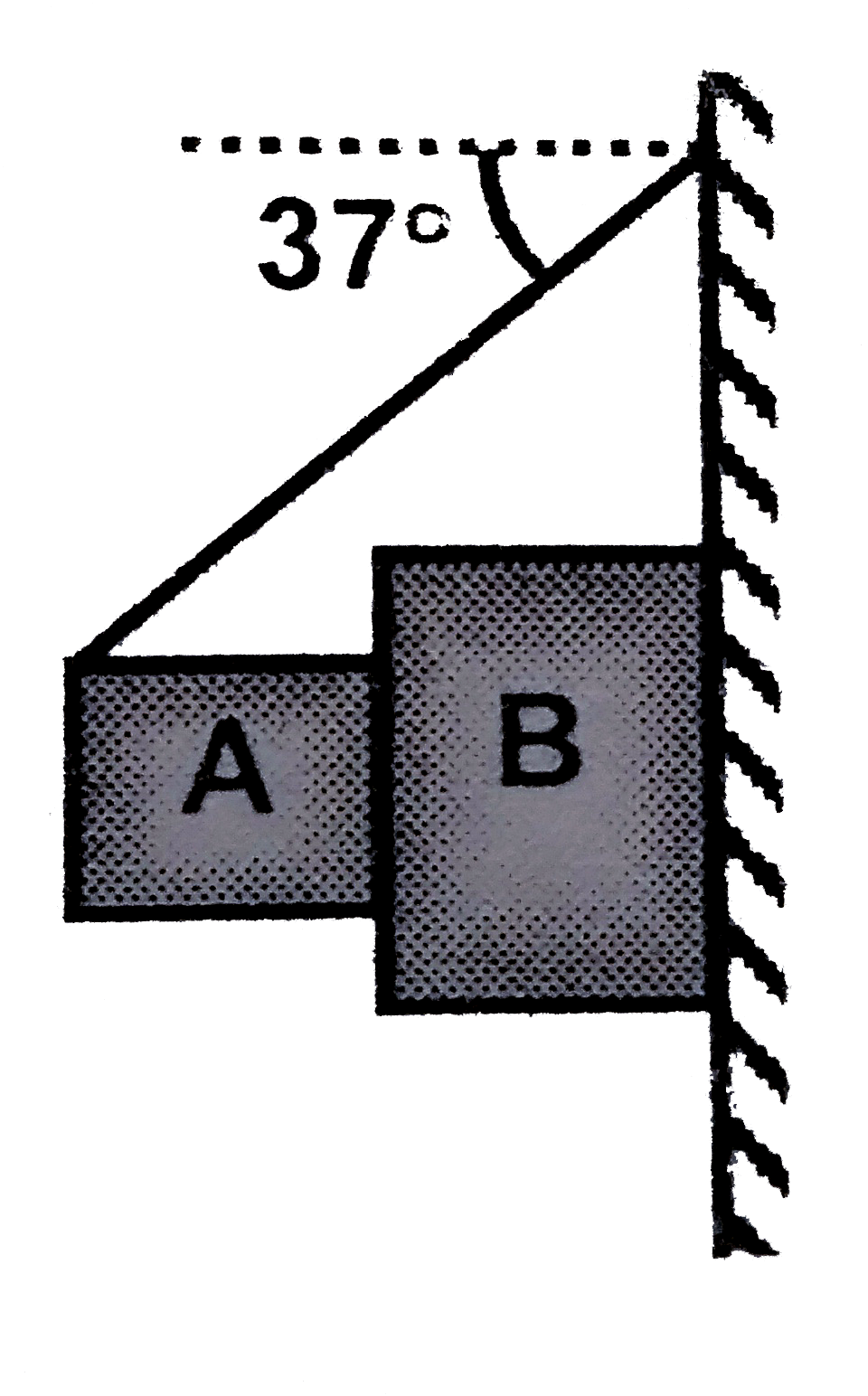Calculate the Force (F) required to cause the block of mass m1=20kg just to slide under the block of mass m2=10kg [ coefficient of friction μ=0⋅25 for all surfaces ]
![Calculate the Force (F) required to cause the block of mass m(1) = 20 kg just to slide under the block of mass m(2) = 10 kg [ coefficient of friction mu = 0*25 for all surfaces ]](https://d10lpgp6xz60nq.cloudfront.net/physics_images/AAK_T1_PHY_C03_SLV_036_Q01.png)
The lower block will experience following forces :

1. Weight m1g
2. N1 normal contact from floor and fr1 friction force by floor .
3. N2 normal contact and fr2 friction by upper block. Reaction of these forces will be on upper block.
4. Force F applied to move block horizontally .
The upper block will experience following forces
(i) Tension force due to string
(ii) N2and fr2 contact force by lower block as mentioned above
(iii) Weight
For equilibrium of two blocks
N1=N2+m1g
F=fr1+fr2 ...(ii)
Tcos53∘=fr2 ...(iii)
N2+Tsin53∘=m2g ....(iv)
For limiting case fr1=μN1andfr2=μN2
Solving above equations
N2=75
N1=275
F=μ(N1+N2)=87⋅5 N.

Topper's Solved these Questions
- LAWS OF MOTIONBook:AAKASH INSTITUTE ENGLISHChapter:LAWS OF MOTIONExercise:Illustration
Explore 7 Videos
- LAWS OF MOTIONBook:AAKASH INSTITUTE ENGLISHChapter:LAWS OF MOTIONExercise:TRY YOURSELF
Explore 69 Videos
- KINETIC THEORYBook:AAKASH INSTITUTE ENGLISHChapter:KINETIC THEORYExercise:EXERCISE (ASSIGNMENT) SECTION - D Assertion - Reason Type Questions
Explore 10 Videos
- MAGNETISM AND MATTER Book:AAKASH INSTITUTE ENGLISHChapter:MAGNETISM AND MATTER Exercise:ASSIGNMENT (SECTION D)
Explore 26 Videos
Similar Questions
force F is applied at the topmost point of block of mass M. The force required to topple the block before sliding is (µ = coefficient of friction)

View SolutionThe coefficient of friction between block A of mass m1=5kg and block B of mass m2=10kg is μ2=0.5 . There is no friction froce between block B and fixed horizontal surface. A force of 300N acts on block B in horizontal direction and a horizontal force of magnitude F acts on block A as shown , both towards right. Initially there is no relative motion between the blocks. The minimum value of F such that relative motion starts between A and B is :

View SolutionFind the minimum value of horizontal force (F) required on the block of mass m to keep it at rest on the wall. Given the coefficient of friction between the surfaces is μ.
View SolutionA block of mass M is being pulley along horizontal surface .The coefficient of friction the block and the surface is μ If another block of mass M/2 is placed on the block and it is pulled is again pulled on the surface , the coefficient of friction the block and the surface will be
View SolutionDetermine the acceleration of the 5kg block A . Neglect the mass of the pulley and cords . The block B has a mass of 10kg, The coefficient of kinetic friction between block B and the surface is μk=0.1 (take g=10m/s2)

View SolutionA block of mass m=3kg slides on a rough inclined plane of cofficient of friction 0.2 Find the resultant force offered by the plane on the block

View SolutionBlock of mass m are released from rest and they slide down the inclined surface as shown in figure. Show that the work done by the frictional forces on the blocks are same in all the cases. Also calculate the speeds with which the blocks reach point B. The coefficient of friction for all the surface is μk.

View SolutionA force of 10N is acting on a block of 20kg on horizontal surface with coefficient of friction μ=0.2. Calculate the work done by the force.
View SolutionTwo blocks of masses m1=10kg and m2=20kg are connected by a spring of stiffness k = 200 N/m. The coefficient of friction between the blocks and the fixed horizontal surface is μ=0.1. Find the minimum constant horizontal force F (in Newton) to be applied to m1 in order to slide the mass m2. (Take g=10m/s2)
View SolutionTwo block A and B of mass 50kg and 300kg respectively are placed as shown in figure. Coefficient of friction between all surface is 12
Then (take g=10m/s)

View Solution

